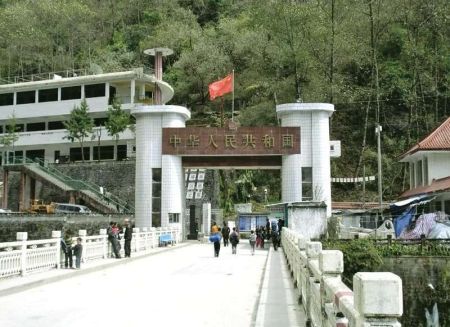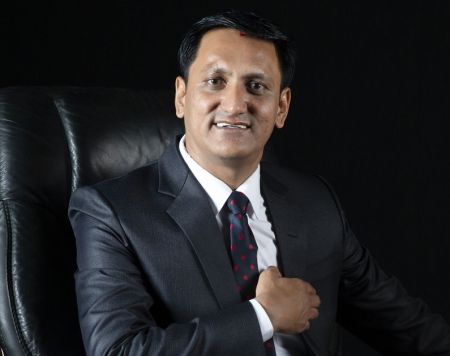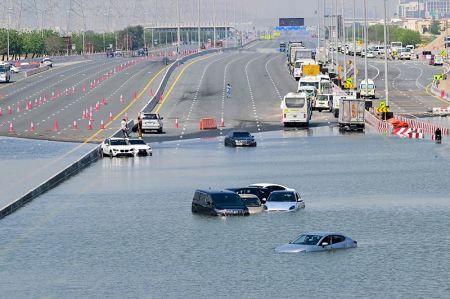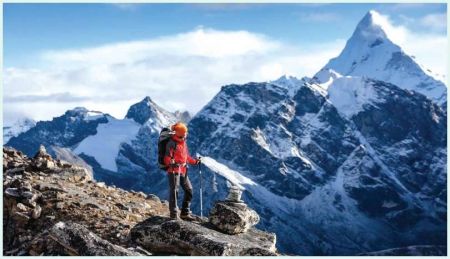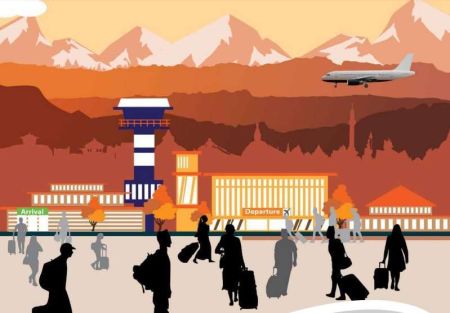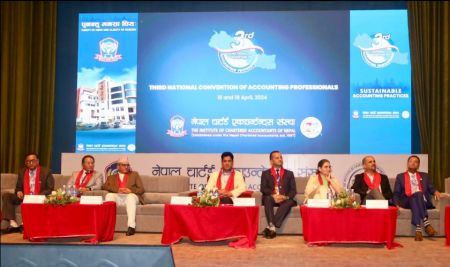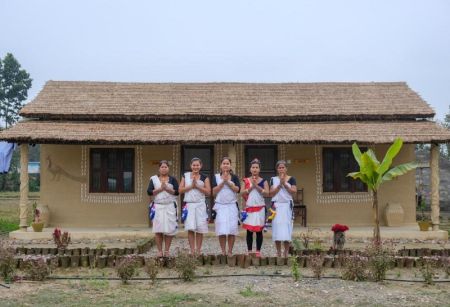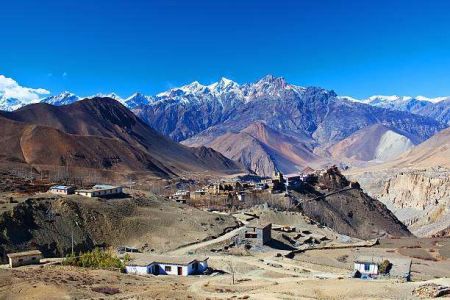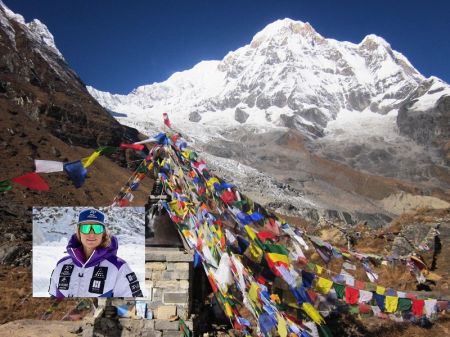--Dr Rewat Bahadur Karki
After the second democratic movement in FY 2007/08, Nepali economy recorded rosy picture including higher GDP growth of 5.8 percent. However, after the constituent assembly (CA) election in 2009 macroeconomic situation went on declining with low growth mainly due to uncertainty of economic policy and deteriorating investment environment. But pre-last year -2011/12 was exceptional i.e. better along with moderate growth of 4.5 percent, the highest in the last five years primarily because of windfall (exogenous) gain caused by weather and remittance, while last year (2012/13)’s performance is poor with the lowest growth 3.5 percent according to the estimates of Central Bureau of Statistics (CBS), and double digit inflation.
Analyzing last year’s situation in brief, efforts have been made to estimate and analyze this fiscal year’ macroeconomic scenario mainly comprising of real sector and price, monetary, fiscal and external sectors based on realistic approach. In FY 2013/14, following six strong bases/assumptions indicate rosy macro economic situation.
1. The current non political government has announced next three year plan (starting from this FY-2013/14) with a growth of 6 percent by fixing the target of upgrading Nepal to developing country from low income country within 10 years as against the UN target of 18 years. The government has announced an ambitious budget in this line too.
2. The government has made its efforts to present the pro-productive and investment-friendly budget instead of loading it populist programmes.
3. The full budget, despite being an election budget, which has come without any disturbance since the first CA election in 2008 AD, has exerted some positive impact in the economy
4. There will be positive impacts in the Nepali economy from the slight improvement (from 3 percent to 3.2 percent in 2013) in world economy and also in neighbouring countries –India and China as forecast by IMF.
5. The last budget as brought by this non-party government in early 2013 gave a clear-cut direction regarding adoption of liberal economic policy and important role of private sector in the economy and thus, has exerted a positive impact.
6. Weather so far is favourable, which will have a positive impact on the economy.
Nonetheless, there are following weak bases or assumptions, which will make the economic scenario weak.
1. Although the election government brought an ambitious election budget it will have minimum impact on economic growth and will instead accelerate inflation
2. IMF has forecast that Nepal’s macroeconomic situation would not improve significantly for the coming five years.
3. Since the first CA election, highest growth of 4.5 percent was recorded last year whereas average growth of last three-year plan is less than four percent as against 5.5 per annual average target.
4. Absorptive capacity for capital expenditure is very poor in Nepal.
5. Unfavourable investment climate due to some extremist political parties and their affiliate organizations (which are against investment), and acute problems relating to load shedding, rigid labour laws, infrastructures etc.
6. Results of the second CA election, held peacefully in Marga 2070, has brought in Nepali Congress, credited for introducing liberal economic policy in the 90s, as the largest party. This is expected to bring a positive effect on the economy.
Based on the above mentioned strong and weak aspect for the estimate, a midway analysis/estimate, which gives the realistic picture, has been made in this article. During 2013/14, some macroeconomic indicators will remain better than that of last year. GDP is estimated to increase from 4.5 percent to a maximum of 5 percent as agricultural sector, the mainstay of the economy, is estimated to grow 3-3.5 percent due to favourable weather condition. Situation of summer crops, mainly paddy and maize, seems better this year. Production of paddy is estimated to have increased by more than 10 percent, compared to the sharp decline of 14 percent, last year.
With regard to non agricultural sector, it will record around 5.5 percent growth, higher than last year’s 5 percent. The manufacturing sector will move up from 1.6 percent to 3 percent as investment climate is expected to improve slightly despite election year. Similarly, trade sector’s growth will shoot up due to the sharp import growth, while other sub-sectors of this sector will remain normal. This growth is supported by high ratio of fixed investment (fixed capital formation) to GDP, which is estimated to rise to 24 percent due to higher capital expenditure as a result of full-fledged budget presented by this non-party government.
(1).jpg)
The inflation, which rose almost by two digit i.e. 9.9 percent last year and has increased at the rate of 10percent during the first four months of this fiscal year (2013/14), is estimated go up annually to 12 percent, which will be very close to the level reached in 2008/09 (13 percent). Being an election year, current expenditure has shot up with remarkable rise in election budget along with sharp rise in private and informal expenditure. The sharp rise in salary (18 percent) and provision of Rs. 1000allowance to the government employees, coupled with sharp appreciation of the American Dollar against Rupee, will lead to high inflationary pressure. Despite higher estimated GDP growth this year, higher money supply caused by above factors will lead to high inflation of 12 percent this fiscal year. Containing the inflationary pressure this year is a big challenge to the authorities.
In terms of government finance, the non-political government has been able to bring the budget on track despite late in the third quarter of last fiscal year-2012/13. Last year, total revised budget was around Rs.370 billion but due to substantial election expenditure as well as full-fledged budget, this year’s total budget estimate is Rs. 517 billion. Government estimates forecast capital expenditure to rise from around Rs. 55 billion level to Rs. 85 billion this year, while Rs. 78.7 billion has been set aside for financial provision.
Although government has given priority to enhance capital expenditure, such expenditure is just 9 percent of the budgeted total capital expenditure in the first five months of this fiscal year (2013/14), while regular expenditure is almost 30 percent in this period. This trend shows that though the capital expenditure will be far below the target, the regular expenditure can cross the target. With the sharp rise in import, the import-based total revenue is estimated to rise by more than 20 percent this year. Thus, in the fiscal sector, increasing the capital expenditure and containing the regular expenditure will remain, as usual, the major challenge for the government.
The election will have an expansionary effect on monetary sector. Both money supply (M1 and M2) will rise sharply than last year. Private sector’s credit growth level would be higher this year than the last year. Similarly, full budget will push the deposit growth and the broad money liquidity (M3). The financial sector has been facing instability, as more than a dozen of BFIs have been declared problematic and some even dissolved. Thus, stabilising and making this sector strong by strengthening the supervisory capacity of the central bank and by enhancing good governance in both the BFIs and the regulator, is a major challenge.
The depressed share market has improved especially after the CA election’s result positioned Nepali Congress, known for its liberal economic policies, as the lead party in the CA. The share market on the whole will record bullish trend this year compared to last year.
External sector in 2013/14 is estimated to register a weak scenario instead of registering any structural improvements. Rise in demand for consumer as well as capital goods, triggered by full-fledged budget and the election expenses, is likely to increase money supply as well as imports. As a result, imports will register sharp growth of 30 percent, and reach about one third of the GDP. Export is estimated to rise by 10-12 percent higher than the last year due to the sharp appreciation of US Dollar and the expected reforms in the export incentive. Due to high import and low export, export-import ratio will go down from current 14 percent to 11 percent, and the trade deficit to one-third of the GDP next year. Consequently, the steady rise in trade deficit will continue. High import growth will make large current account deficit this year. However, increased remittance, which is due to sharp Dollar appreciation, will ultimately lead to BOP surplus in 2013/14 but not in a significant manner. Thus strengthening the external sector, by decelerating the trade deficit through import management and export enhancement, will remain a major challenge.
(1).jpg)
Considering the overall macroeconomic scenario and challenges, the new government, which is expected to form soon, should concentrate on economic agenda and in addressing major issues and challenges that Nepal’s economyis confronting. The elected government first of all has to pursuade all major political parties to form common economic agenda, and in setting future direction for the economy. Along with that the government should take initiatives to reform policies for addressing immediate economic concerns. In this regard, priority should be given to creating conducive environment for investment, reducing poverty, unemployment and bad governance. Along with that the government should provide special incentive to exports, energy and agriculture sector. It should focus on capacity enhancement of capital expenditure, containing double-digit inflation and decelerating trade deficit along with strengthening banking system. Nonetheless, along with the government, the private sector and other sections of societies should make collective efforts to strengthen the national economy.
(Writer is Expert Member at Securities Board of Nepal.)







